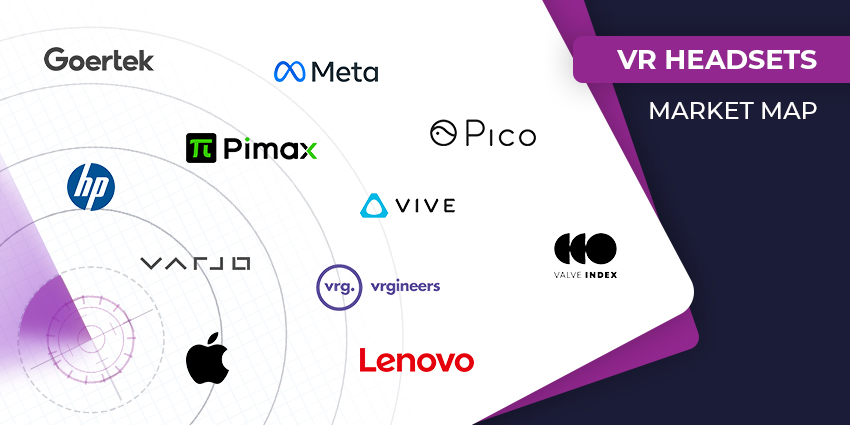The Metaverse brings us a step closer to digital experiences that mimic the real world except for one thing: the element of physical touch.
Several companies are working on haptics technology that will provide touch-based feedback in virtual reality (VR). Currently, haptics development is a complex process and still relies on VR controllers.
Now, firms have designed an alternative technology that could allow metaverse users to experience touch with ultrasonic waves without controllers or other handheld gear. This alternative is made possible by the Emerge Home system.
Emerge Home allows users to experience physical touch inside a VR environment with their bare hands. Here are some of the reasons as to why this will be important to the Metaverse.
The Importance of Physical Touch in the Metaverse
Despite the convenience of online collaboration, it is still not a 100 percent replacement for in-person interactions and teamwork. People lose nonverbal communication, sensory experiences, and methods of experiencing things together while we are online.
While virtual worlds and metaverse platforms are becoming the hub of shared social interactions, they still lack a critical component of the human experience: the capacity to physically connect with individuals who are important to us by using our actual hands to feel, engage, and physically connect with them.
The findings from a December 2021 report from the National Research Group found that users are excited about the Metaverse, but missed a few critical elements.
The report noted 78 percent said that they “miss the ability to physically touch and interact” in VR, and one in every two customers wished technology could allow them to physically feel or touch things just like in real life.
What Is the Emerge Home System?
Emerge Home is an ultrasound technology-based handsfree VR controller that looks like a flat tabletop device and enables physical touch in metaverse environments.
According to the company’s website, functionality is simple: the user places the device, which looks somewhat like a closed laptop or a weighing scale, on top of a table or any flat surface while wearing a VR headset.
It then uses the Emerge app to synchronize with the VR software or Metaverse platform that users access through their headset. Once the two are synced, they can simply wave their hands above the device and make a variety of movements translated in VR.
Currently, the Emerge home system has an app available for Meta Quest users, which allows up to seven users to exchange tactile greetings like a handshake.
The Technology Behind Emerge Home’s Physical Touch Capabilities
It is possible to literally sense tactile feedback with bare hands in a virtual realm, without the need for gloves, consoles, or any other accessories with Emerge Home.
The Emerge Wave-1 is the system’s primary hardware component, which is a tabletop unit that enables the user’s hands to act as controllers. The gadget generates ultrasonic waves, enabling users to engage with the virtual environment by touching it and feeling its sensations.
The ultrasound part of the system was first reported by Emerge in September of 2021 when the company announced the creation of an ultrasound sensor. Using micro-electromechanical systems (MEMS) technology to minimize cost and space, the sensor allows the Emerge Wave-1 to project ultrasonic waves around virtual objects and interactions, allowing for more realistic interactions.
Consequently, it initiates a field of interaction approximately 36 inches above the device and surrounds it in a 120-degree circle. The interaction area formed by the gadget creates a zone where users can operate, allowing them to communicate via physical touch.
Key Features of Emerge Home
The solution offers the following key features:
- Tested physical touch experiences – Emerge Home has already conducted a sort of community testing session by inviting its Kickstarter investors to a physical event. Participants were offered the chance to try out the solution’s developer demos and mint tactile NFTs using the device. This type of social VR with the benefit of physical touch will be at the heart of Emerge Home’s value proposition.
- Mobile applications – Currently, the Emerge Home system offers two different mobile applications to help users connect it with a VR headset of their choice. There is a dedicated app for Meta Quest 2 (which may become the default VR app for Emerge) and a separate mobile app.
- Access to the Discord community – The Emerge Home developer team connects with its users mostly through a Discord channel. While the company is based out of Los Angeles in the US, it intends to reach a global audience through international shipping and support, and Discord Access will be central to the Emerge home experience and will provide users with a social space to meet and connect.
Emerge Home Funding and Investments
The haptic firm is raising funding by firstly launching an ongoing Kickstarter project, through which it is looking to raise $200,000 by mid-April 2022. Product shipments are also slated to begin in this period.
At the time of writing this article, it had raised nearly $159,000, through Kickstarter investments from 239 backers, in addition to raising $13 million USD from Metaverse pioneers and technology leaders.
Twitch co-founder Kevin Lin, MEMS expert Kurt Petersen, Riot Games co-founder Marc Merrill, and Metaverse thought leader Matthew Ball are some of the notable names to invest in Emerge home. The team had previously raised capital from M13, Vulcan Capital, and others, totalling $31 million.
In the virtual world, Emerge Home is the initial step in a larger quest to develop a new language of touch, Isaac Castro, Emerge Co-CEO and Co-founder said in a statement in late January, adding the firm was currently focusing on VR and was exploring other interfaces in the near future.






